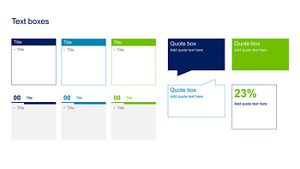
The SME is a major advance over prior methods that compared activity between different encoding conditions rather than relating it to eventual memory outcomes (for reviews of the SME, see Wagner et al. 1980), contrasting brain activity during the study phase of a task for subsequently remembered (hits) versus forgotten (misses) items. To analyze brain activity underlying successful memory formation, cognitive neuroscientists have adopted the so-called “subsequent memory effect” (SME Sanquist et al. This is in line with behavioral research, which supports many determinants of memory apart from the cognitive processes during study. We show that this is possible with the conventional event-related potential “subsequent-memory-effect” signals as well as with machine learning classifiers, but only to a small degree. NEW & NOTEWORTHY For both basic and applied reasons, an important goal is to identify brain activity present while people study materials that enable us to predict whether they will remember those materials. It is possible that this predictive approach will succeed better when other experimental factors known to influence memory outcome are also integrated into the models. These findings suggest that, on average, brain activity, measured by EEG, during the study phase is only marginally predictive of subsequent memory. In addition, topographic maps suggested individual differences in sources of predictive activity.

However, the prediction was still small in magnitude. Next, pattern classification of the multivariate spatiotemporal features of the single-trial EEG waveform also succeeded in predicting memory. First, we tested whether classic event-related potential signals were, in fact, predictive of later old/new recognition memory ( N = 62, 225 items/participant) this produced significant but small predictive success. However, the modern field of machine learning distinguishes between descriptive analysis, subject to overfitting, and true prediction, that can classify untrained data. This “subsequent memory effect” method has been described as identifying brain activity “predictive” of memory outcome. If you are a government, commercial, or enterprise user, please contact the enterprise Disability Answer Desk.To isolate brain activity that may reflect effective cognitive processes during the study phase of a memory task, cognitive neuroscientists commonly contrast brain activity during study of later-remembered versus later-forgotten items. Please go to the Microsoft Disability Answer Desk site to find out the contact details for your region.

The Disability Answer Desk support team is trained in using many popular assistive technologies and can offer assistance in English, Spanish, French, and American Sign Language. If you have a disability or questions related to accessibility, please contact the Microsoft Disability Answer Desk for technical assistance. Microsoft wants to provide the best possible experience for all our customers. Technical support for customers with disabilities Set up your device to work with accessibility in Microsoft 365 Use Search/Tell Me to find the command you wantįind what you need with Microsoft Search in Office Use the Simplified Ribbon in PowerPoint for the web Improve accessibility with the Accessibility Checker Make your PowerPoint presentations accessible to people with disabilities Say hello to Presenter Coach, PowerPoint’s new AI-powered tool which will help you nail your next presentation Present with real-time, automatic captions or subtitles in PowerPointĪdd closed captions and subtitles to media in PowerPointĪccessibility features in video playback on PowerPointĪdd closed captions or subtitles to media in PowerPointĬlosed Caption file types supported by PowerPointĬreate inclusive PowerPoint presentations Learn about PowerPoint Presentation Translator Use keyboard shortcuts to deliver PowerPoint presentations

Use keyboard shortcuts to create PowerPoint presentations Work with keyboard shortcuts in PowerPoint Here you'll also find tools to make your PowerPoint presentations accessible for everyone. This page lists accessibility tools for PowerPoint.

PowerPoint for Microsoft 365 PowerPoint 2021 PowerPoint 2019 PowerPoint 2016 More.


 0 kommentar(er)
0 kommentar(er)
